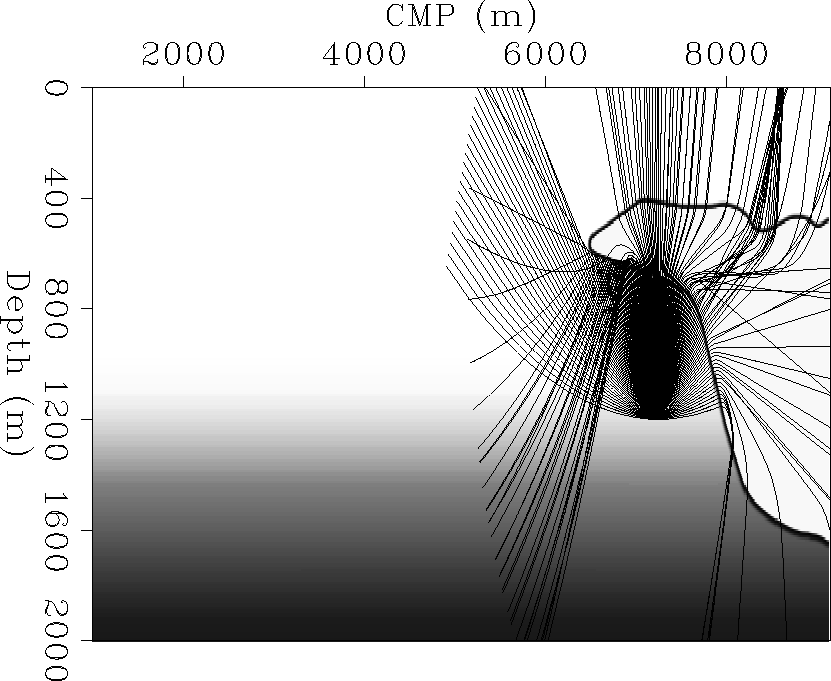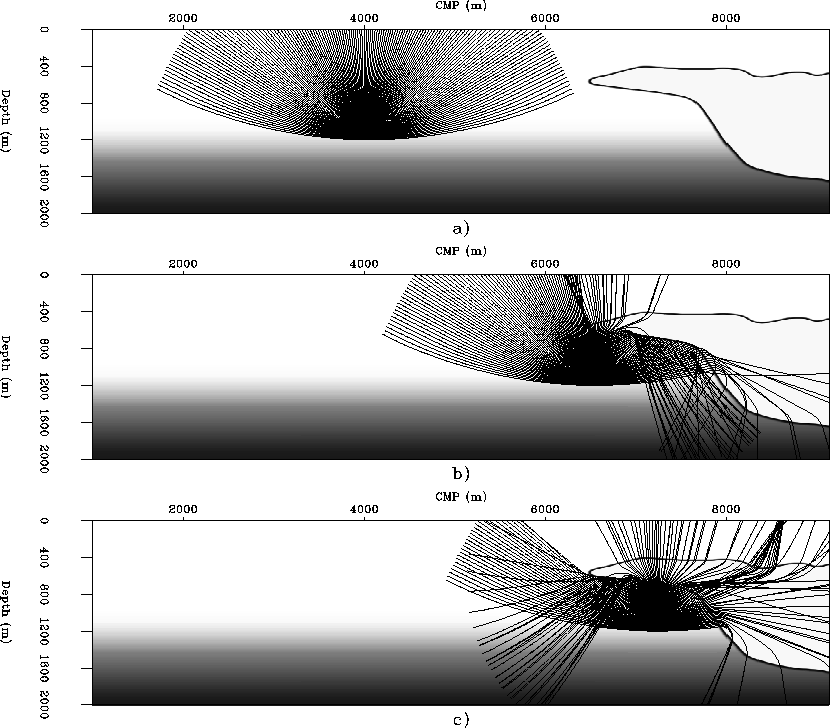Figure 1 illustrates the main idea of this work. We are using a synthetic velocity model with a simple reflector geometry but a complicated salt structure that challenges the image under the salt body Prucha et al. (2001). We define two groups of rays for the same reflector point, group A travels through the sediments and group B travels through the salt body. Since imaging under salt body is relative complicated Prucha et al. (2001), we are going to modify and update our image of the reflections points that have, at least, one group of rays traveling through the salt body.
The imaging update is possible by just modifying
the rays that goes through the salt body, process
that is possible by fixing one of the
parameters (![]() ) in equation (1) to
1, and
by varying the other two (
) in equation (1) to
1, and
by varying the other two (![]() and
and ![]() ).
).
It is possible to observe in Figure 2, the different effect that this procedure will have for different reflectors points. Figure 2a presents a reflector point away from the salt, for this reflector we should have no correction at all, since there are no rays going through the salt. Figure 2b presents a reflector point with few rays going through the salt, the correction should be small for this reflectors. Figure 2c presents a reflector point with a significant number of rays going through the salt body, these kind of reflectors are generally difficult to image and for those we expect to improve the quality of the image with the asymmetric pre-stack Stolt residual migration operator.
It is also possible to separate the image in sections where we need to apply correction (Figure 2c), and sections where we do not need to apply the correction (Figure 2a). Therefore, we need to be able to interpolate our final image from those two separate sections.
|
hwt2c
Figure 1 Main problem: Two different groups of rays, group A doesn't go through the salt body; group B goes through the salt body. |  |
|
hwt2d2
Figure 2 Different ray tracing for different reflector position. a) A reflector position not affected by the salt body; b) A reflector position partially affected by the salt body; c) A reflector position totally affected by the salt body. |  |
![[*]](http://sepwww.stanford.edu/latex2html/movie.gif)